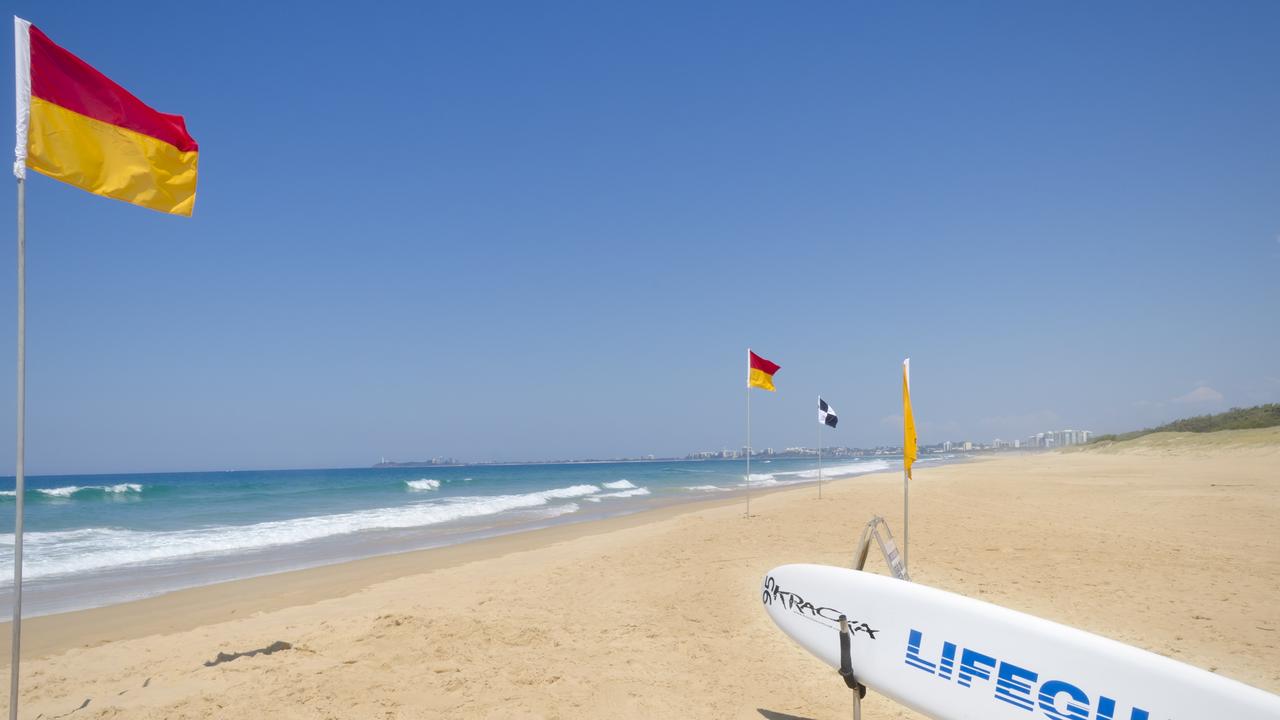Incredible discovery beneath Brisbane’s new runway
Engineers working on Brisbane’s parallel runway expected challenges, but what they found when they began digging surprised even them.

QLD News
Don't miss out on the headlines from QLD News. Followed categories will be added to My News.
BRISBANE’S $1.3 billion second runway has been one of the most complicated engineering feats of its type in the world and taken more than seven years to build.
Engineers were confronted with soil with the consistency of “sticky toothpaste” on which to create a stable base for the 3.3km main runway and 12km of attached taxiways.
Runway project director Paul Coughlan said the airport engineers expected challenges when transforming the casurina-covered bog into a high, stable and reliable runway base but what they found surprised even them.
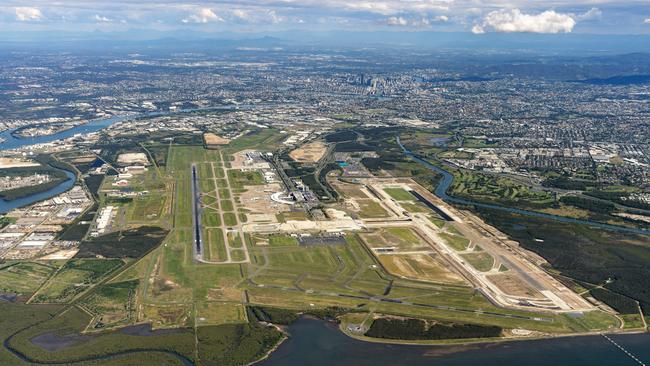
“Our geotechnical engineers back in 2005 and 2006 discovered running across the runway site was probably the old Brisbane River,” Coughlan said.
“And rivers over thousands of years meander.
“I think we were expecting poor soils but we hit the jackpot, which as an engineer you don’t want to hit, which is the worst you could have.
“We always knew we had to build up the site in terms of height but also putting weight on it to really compress the topsoil.”
More than 11 million cubic metres of sand was pumped out of Moreton Bay by the 183m long, 40m wide “jumbo class” dredge Charles Darwin to raise the level of the 360ha site.
Pipes were then dug under the existing runway to pump the sand 8km from the dredge across to the new runway site.
The sand was piled high and left to settle for three years, with 350,000 “wick drains” sewn through the site, some doing down as deep as 30m.
The pressure from the sand above squeezed out the water below, up through the wick drains and was pumped away.

For Coughlan and his team, it was a case of ‘hurry up and wait’ - monitoring the sand as it settled for more than three years during the first phase of the build.
“I think we put on the last cubic metre of sand on or around December 7 2014,” Coughlan said.
“Then you had to wait for the sand to settle.
“A lot of people talk about watching the grass grow. We watched the ground settle.”
Some parts of the site settled as much as 3m over time, sitting as they were above a former mouth of the Brisbane River.
“The weight of the sand went down just under 3m,” Coughlan said.
“It behaved as we predicted.
“Other parts of the site went down 50cm.
“That was one of the engineering challenges.
“The ground was not just soft and part of a river delta, it was variable.”
The final, stable level is now high enough to be guaranteed flood free.
“When you started building a runway, the ground continues to settle but you know the predictions now are it will settle about on average 200 millimeters over the next 40 years,” Coughlin said.
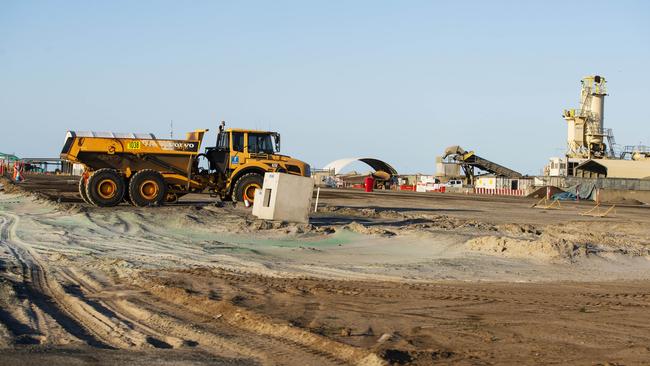
Once the land stopped sinking, more than 2 million cubic metres of sand was scraped off the top and has been carved into mounds beside the runway for future projects.
The runway itself then sits on a special mixed gravel base with asphalt over the top, with concrete ends.
“We got underway with the construction of the beginning of 2017,” Coughlan said.
“It has particular challenges, but as a concept (a runway) involves pavement and major roads are pavement.
“But it is very bespoke.
“Under the main runway we have 2.5m of heavily compacted sand then we have 600mm of a special type of crushed rock.
“And then we put asphalt on top.
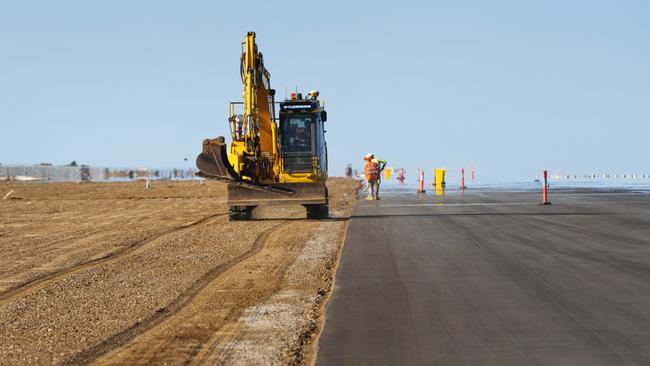
“On the taxiways we have 1.5m of sand, we put 200mm of crushed rock and then we put almost half a metre of concrete.
“So I think it’s almost the sheer size of the pavement, but the rock is a special rock.
“We have over 2000 lights installed inside the pavement.”
The final tar was laid earlier this month with work to begin on the lights and runway markings.
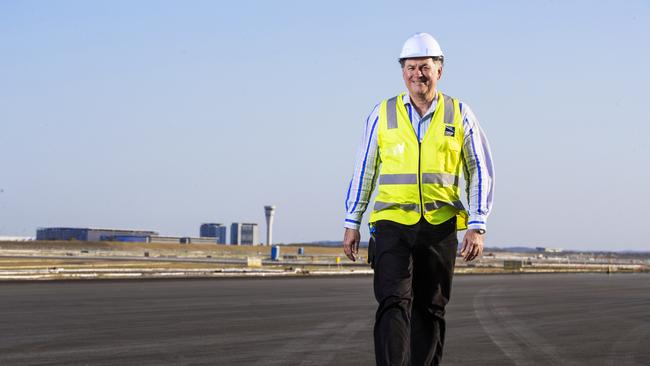
Construction is expected to be finished by the end of the year, followed by six months of testing and certification before it opens mid-year.
Part of the construction included the Dryandra underpass built to allow planes to taxi over the top of access road.
Built to hold 700 tonnes, 140 tonnes more than the heaviest passenger jet, the A380, it will see planes pass over the top of cars on their way to the terminals.
Originally published as Incredible discovery beneath Brisbane’s new runway


